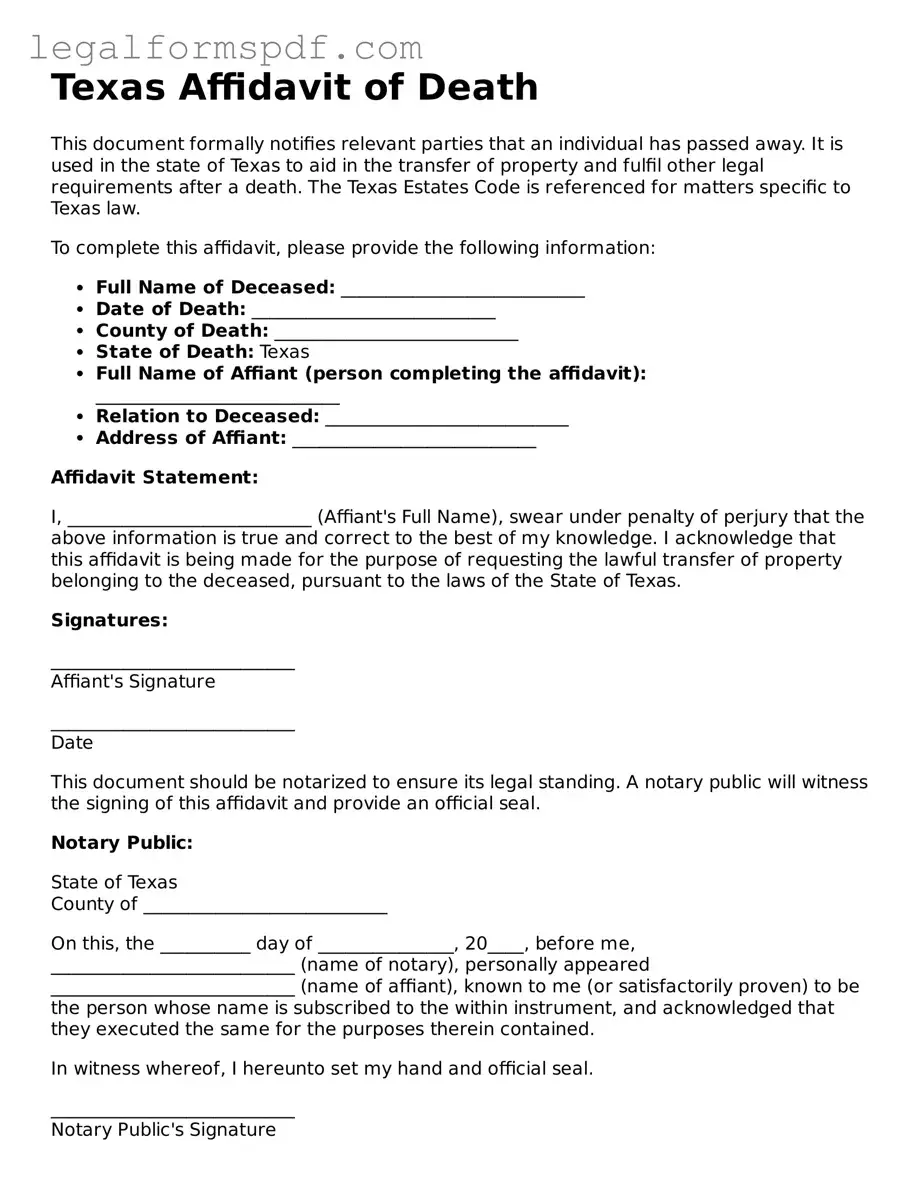Texas Affidavit of Death
This document formally notifies relevant parties that an individual has passed away. It is used in the state of Texas to aid in the transfer of property and fulfil other legal requirements after a death. The Texas Estates Code is referenced for matters specific to Texas law.
To complete this affidavit, please provide the following information:
- Full Name of Deceased: ___________________________
- Date of Death: ___________________________
- County of Death: ___________________________
- State of Death: Texas
- Full Name of Affiant (person completing the affidavit): ___________________________
- Relation to Deceased: ___________________________
- Address of Affiant: ___________________________
Affidavit Statement:
I, ___________________________ (Affiant's Full Name), swear under penalty of perjury that the above information is true and correct to the best of my knowledge. I acknowledge that this affidavit is being made for the purpose of requesting the lawful transfer of property belonging to the deceased, pursuant to the laws of the State of Texas.
Signatures:
___________________________
Affiant's Signature
___________________________
Date
This document should be notarized to ensure its legal standing. A notary public will witness the signing of this affidavit and provide an official seal.
Notary Public:
State of Texas
County of ___________________________
On this, the __________ day of _______________, 20____, before me, ___________________________ (name of notary), personally appeared ___________________________ (name of affiant), known to me (or satisfactorily proven) to be the person whose name is subscribed to the within instrument, and acknowledged that they executed the same for the purposes therein contained.
In witness whereof, I hereunto set my hand and official seal.
___________________________
Notary Public's Signature
___________________________
My commission expires: _____________
